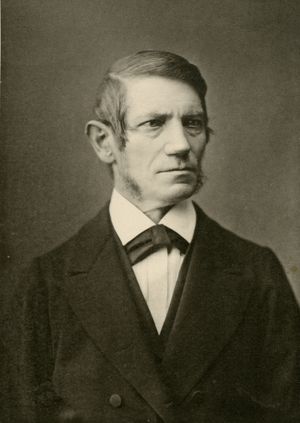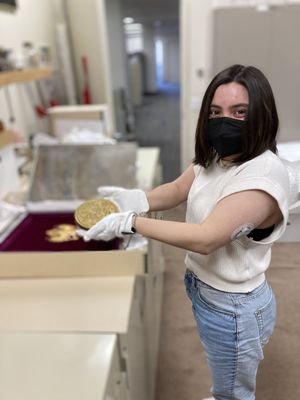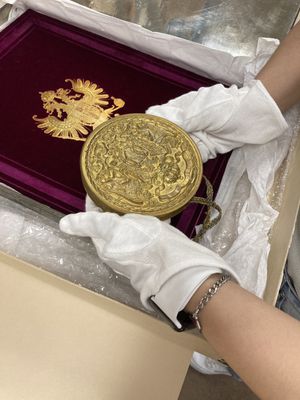Author: Maya Quin Lau Michael (she/her/hers), Intern, Truhlsen-Marmor Museum of the Eye®
Did you know that extraordinary ophthalmologists could be knighted? Dr. Carl Ferdinand Ritter von Arlt (1812-1887) was an Austrian ophthalmologist who was given this honor in the 1800s. Others, such as Sir Nicholas Harold Lloyd Ridley, who invented the intraocular lens, Sir William Stewart Duke-Elder, who became ophthalmologist to the British Royal Family, and Dame Ida Mann were all recognized by royalty for their work as ophthalmologists.
Recently, I had the amazing experience of learning about Dr. Arlt through my internship here at the Museum of the Eye. As an inquisitive museum studies graduate student at the University of San Francisco, I was especially excited to learn about Dr. Arlt’s legacy in the ophthalmology world.

Dr. Carl Ferdinand Ritter von Arlt
Dr. Arlt is considered to be one of the most impactful figures in ophthalmology from the 19th century. He was trained by Professor Johann Nepomuk Fischer (1777-1847), the founder of modern eye medicine in Bohemia, now modern day Czech Republic. Dr. Arlt worked as a Supplementary Chair of Ophthalmology at the University of Prague and became a full Professor of Ophthalmology in 1849. Dr. Arlt also became a Professor of Ophthalmology at the University of Vienna from 1856-1883. He was a skilled eye surgeon, researcher, and writer.
During his life, Dr. Arlt wrote many books and articles on ophthalmology. He was the teacher of several famous ophthalmologists including, Coccius, von Graefe, and Fuchs. Notably, Dr. Arlt clarified anatomy, modified von Graefe’s cataract operation, and his findings contributed to discoveries about short-sightedness. Dr. Arlt was also a well-known public figure. He was eventually featured on stamps, postcards, and had several public statues erected in his honor.
On May 9, 1870, Dr. Arlt was bestowed the Austro-Hungarian empire grant of arms and nobility. Presented to him by Emperor Franz Joseph I (1830-1916), this honor conferred the title of “Ritter von” to Arlt, which was the equivalent of an English knighthood. This grant of nobility and arms would have been especially prestigious as this title could be passed down to Dr. Arlt’s descendants signifying that they were now nobility.
Recently, the Truhlsen-Marmor Museum of the Eye Director Jenny Benjamin and I had the exceptional experience of unearthing Dr. Carl Ferdinand Ritter von Arlt’s grant of arms and nobility along with official documents from the 1870’s! It is in marvelous condition for being over 150 years old. This blast from the past included a red velvet book with gorgeously hand painted and printed calligraphic pages describing the knighthood, an official wax seal of Emperor Franz Joseph I encased in a large gold medal, and official documents conferring the title of “Ritter von” from the Austro-Hungarian Empire. All of these pieces have stood the test of time and are brilliantly gilded and superbly extravagant, fit for a knight.

Inside the red velvet book is a tribute to Dr. Arlt’s academic and philanthropic endeavors, from making waves in the ophthalmology field to providing ophthalmic care to those in need annually at his home town of Ober-Graupen, Bohemia. Official documents that conferred the official title of “Ritter von” to Arlt are beautifully signed from high officials of the Austro-Hungarian Empire, but perhaps the most alluring piece in the collection is the large 4.5 inch diameter gold medal encasing a wax seal from Emperor Franz Joseph I, which would have been a most impressive decorative piece of memorabilia.

Dr. Arlt’s legacy was not just remembered by his family and friends, the field of ophthalmology continues to build upon his groundbreaking knowledge and academic legacy. While Dr. Carl Ferdinand Ritter von Arlt was not a sword wielding, armor wearing, jousting legend, he justly deserved the honor and prestige of having the title of knight.